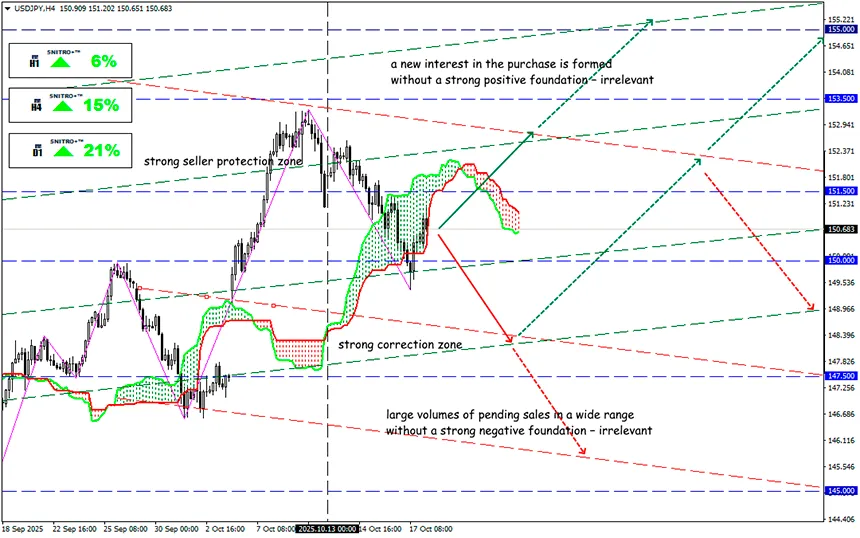How Political Wars Pressure the Crypto Market

USD/JPY
Key zone: 150.00 - 151.50
Buy: 151.50 (on a confident breakdown of 151.00) ; target 153.50; StopLoss 150.80
Sell: 150.00 (on strong negative fundamentals) ; target 148.50-148.00; StopLoss 150.70
Trump first declared that the U.S. was waging a trade war against China during his first term. In 2018–2019, the increase in tariffs on metals, electronics, and components caused a domino effect, collapsing production chains and stock indices. Back then, cryptocurrencies were seen as a “risky asset” and moved in sync with tech stocks.
Today, similar political actions are shifting the balance of power not only in traditional markets but also in the digital economy. Trump once again accused Beijing of “unfair competition” and announced his intention to completely reshape trade relations between the two countries, emphasizing that “America will no longer tolerate inequality.” From that moment, crypto traders began pricing in the risk of a catastrophe.
The announcement of 100% tariffs on Chinese imports triggered the crash. Within hours, BTC fell from around $121,000 to $108,000, with total liquidations exceeding approximately $21 billion—though the actual losses were likely higher.
The U.S.–China trade conflict impacts the crypto market much more severely than it may appear. It affects not only finished goods but also the supply of technological equipment—from microchips to components used for mining. Rising equipment costs increase mining expenses and weaken the stability of mining companies.
During sharp price fluctuations, algorithmic trading, margin positions, and derivatives amplify market swings, with spreads widening to extreme levels. Futures volatility reached record highs, and exchanges reported significant re-quotes on order executions. Even major institutional players were forced to reduce exposure to mitigate cascading liquidation risks.
In such moments, the crypto market loses its main foundation — liquidity — and enters a cascade sell-off: weak players exit, large funds cut exposure, and those outside the market are left unsure whether to celebrate or regret the missed profits. Of course, as volatility stabilizes, part of the capital eventually returns.
Today, digital assets have become an integral part of the global economy. The trade war now has a technological dimension — control over rare earth materials (REMs), semiconductors, and software. If these restrictions intensify, they will inevitably affect the blockchain industry.
Add to this the factor of active speculation by certain political figures, such as the Trump family and the company World Liberty Financial (WLF) with tokens $WLFI, $TRUMP, and $MELANIA. The Trump family also participates (through American Bitcoin Corp.) in Bitcoin mining and BTC reserve management.
The involvement of politicians in crypto-related “schemes,” while governments simultaneously regulate those same assets, creates potential conflicts of interest. Meme coins and tokens without clear utility are typical signs of volatility and speculation. Moreover, possible connections to foreign (often opaque) capital raise risks for national security and regulation.
Thus, the political factor in analyzing crypto market dynamics becomes crucial since cryptocurrencies have long lost their status as a reliable safe haven. If you want to protect your capital — invest in gold.
So we act wisely and avoid unnecessary risks.
Profits to y’all!


















